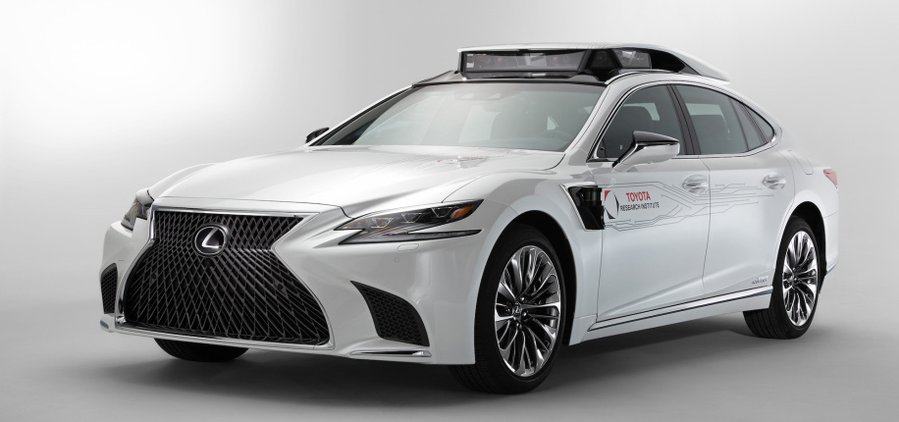Toyota is bringing a new research vehicle to CES. The TRI-P4 autonomous driving test vehicle, based on the Lexus LS500h, is a major step ahead, according to Toyota, as it has improved computing power and additional cameras for better reaction times. Earlier test mules have also used the LS as a basis, and the shift to the new, fifth generation LS brings chassis and steering-control benefits, so the vehicle's movements are smoother in automated mode. The camera tech has also been better integrated into the vehicle design, courtesy of CALTY in Ann Arbor, Michigan. Development has been swift, as the TRI's P2.1 car was unveiled in 2017.
X
The P4 car will be used for Toyota Research Institute's Guardian and Chauffeur mode development. The two tiers differ somewhat, as TRI's Ryan Eustice explains: "Our Chauffeur development is focused on full autonomy, where the human is essentially removed from the driving equation, either completely in all environments, or within a restricted driving domain. Guardian, on the other hand, is being designed to amplify human performance behind the wheel, not replace it. The introduction of the new P4 platform will help us accelerate the development of both tracks when it joins our fleet this spring."
The vehicle's situational awareness is boosted by two extra cameras facing on the sides, and a new imaging sensor both forward and rearward. Toyota says the P4's lidar setup is a carryover from the previous platform, but that its machine learning is much improved by its more powerful computer setup. The electricity required by the P4's computing power also comes from the hybrid battery, and as the computer "brain" is now housed vertically against the rear seat's backing, actual trunk space has been freed. More LS500hs will begin to be modified into TRI-P4 vehicles during spring 2019.

